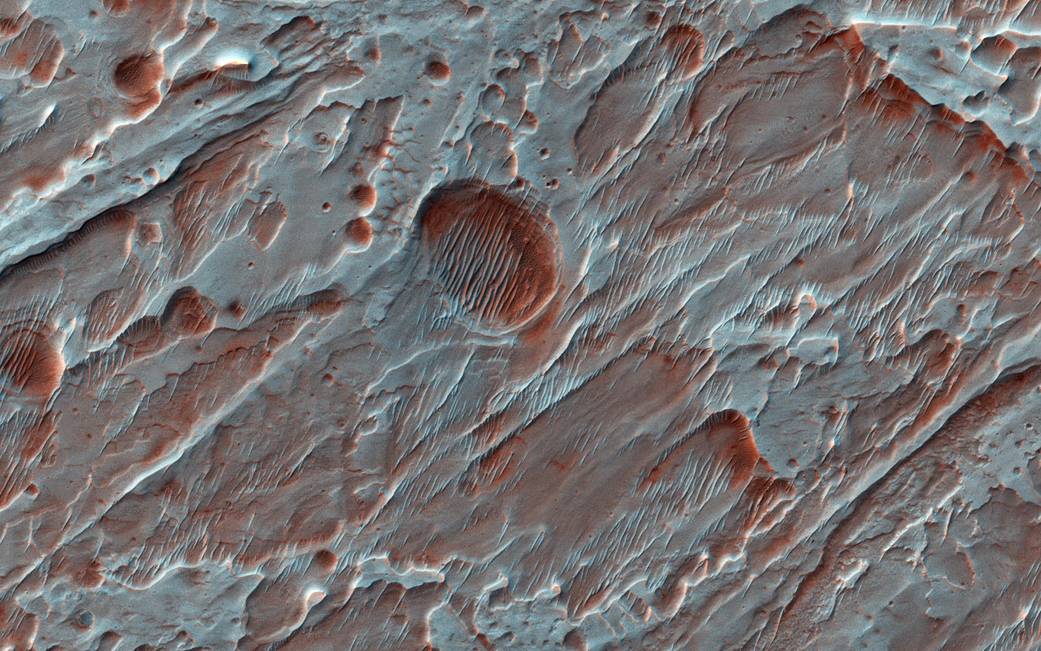This image, acquired by NASA’s Mars Reconnaissance Orbiter on Sept. 16, 2013, shows Roddy Crater on Mars, home to several large alluvial fans, which formed as water moved sediment from the mountainous crater rim and deposited it onto the flatter crater floor. Alluvial fans are found on Earth, Mars, and even Saturn’s moon, Titan.
The fans built up over time during intense rain storms or from melting snow. Due to the strong winds on Mars, the river channels that once carried water and sediment on the fan surfaces are now standing as raised ridges and platforms. A thin blanket of ejecta (upper right) from a small crater on Roddy’s eastern rim protected underlying fan surfaces from modification by the wind compared to nearby, unprotected fans (left). The scarp beneath the thin ejecta surface exposes beautiful light-toned layers from the alluvial fans below.
The University of Arizona, Tucson, operates HiRISE, which was built by Ball Aerospace & Technologies Corp., Boulder, Colorado. NASA’s Jet Propulsion Laboratory, a division of Caltech in Pasadena, California, manages the Mars Reconnaissance Orbiter Project for NASA’s Science Mission Directorate, Washington.
Image credit: NASA/JPL-Caltech/Univ. of Arizona


























